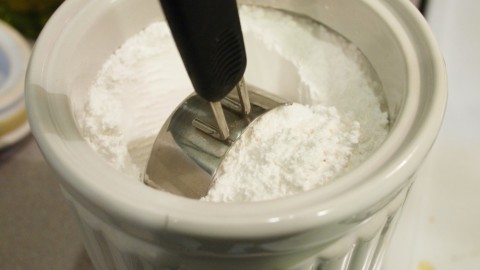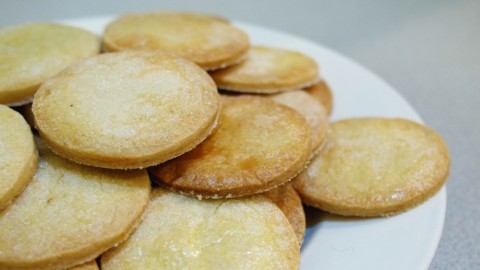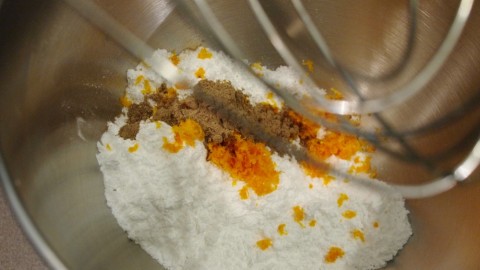I can’t say that I’m much of a C. S. Lewis fan. His writing for adults has never much grabbed me. And being neither a Christian, nor someone who read the books as a child, I have a limited appreciation for The Chronicles of Narnia. At best. But I do owe C. S. Lewis one debt of gratitude for Narnia. It names for me a particular attitude that I have held all my life, but that I have never otherwise been able to adequately articulate: I desire, like the White Witch, for it always to be winter, but never to be Christmas.
Or Hanukkah. Or Kwanzaa. Or most of the other mass-marketed gift-giving holidays at the end of the year.
I am not, as you might suspect, a Grinch. I don’t hate Christmas, or any of the rest of the Holiday Season, per se. Despite the fact that I am not myself religious, I don’t hate religion, either. Nor, under most circumstances, do I hate consumer capitalism. (For most of the year, in fact, I like to shop more than I would willingly admit in public).
The issue for me, I think, is that when we combine religion and explosive shopping with a double scoop of good old American optimism, the mixture is so rich, and so saccharine, that my throat closes, and my stomach churns, and all I want to do is find one of those Santas ringing one of those infernal, piercing bells for the Salvation Army, and throw a shoe at him. I want to wipe those fakey smiles off the faces of the store-clerks who chirp Happy Holidays! at me as they take my money. I want to pour bleach into the base of a Christmas tree, and put lumps of coal in children’s stockings.
I guess, maybe, that I do sound like a Grinch. And I guess, maybe, that I have said once or twice, to one or two people, that I “hate” Christmas. But it’s not like that. Really.
I’m actually a big fan of what I have come to think of as traditional Christmas, and what Sarah has come to call, somewhat mockingly, Dickensian Christmas. I am struck with a wave of nostalgia at the thought of drinking mulled wine while gathered around an old-fashioned fireplace — something I have never actually experienced. I roast chestnuts at every opportunity, while they are in season. Perennially, I offer to cook Sarah’s family a Christmas goose, complete with stuffing, and plum pudding for dessert. (And perennially, they turn me down. Flatly.)
I’m not a big fan of the Christmas songs of the baby-boom generation. But I do spend much of the winter humming some of the more traditional music. “Good King Wenceslas” does it for me. As does “God Rest Ye Merry Gentlemen,” “I Saw Three Ships,” and even religious music like “Veni, Veni Emmanuel.”
And while I’ve never been quite comfortable with the idea of giving — or receiving — gifts, I do like the idea of reciprocity, of material demonstrations of care for one’s neighbors, of finding opportunities to build tangible community with family, at work, in the neighborhood. I just wish that it actually worked that way.
Which is where, to my mind, Christmas cookies come in. Sarah and I began making Christmas cookies, in bulk, a couple of years ago, as a compromise between my position — no gifts — and her position — wanting to be on speaking terms with our families. Every year now, I make three or four different kinds of cookies. Then Sarah divvies them up, packages them (mostly in take-out containers, re-purposed for the cause), and sends them out to family and friends across the country.
This has a couple of great advantages. On the most practical level, it keeps me out of a situation where I am apt to hit a poor, defenseless mall employee, or challenge kindly Parson Brown to a duel. It keeps us out of the consumerist rat-race — at least a little. And it means one fewer gift that a family member will stick in a closet and only dust off when we come calling. The cookies are consumable, after all.
In a broader sense, though, as you (dear readers!) may have gathered by now, there is little that better captures the essence, for me, of caring for one’s friends and family than cooking for them. It’s why I like to have folks over for Thanksgiving. It’s why my impulse, when we have house guests, is to feed them, continuously and without mercy. If gift-giving is about renewing the bonds of community with people with whom one is close, aren’t home-made consumables orders of magnitude better than something … made of plastic?
Sometimes. Most of the time. Though some people get books, if I’ve found something I think they’ll like.
At any rate, this year, a lot of people got a lot of cookies. I baked about thirty-three dozen, overall: chocolate chip, nutmeg maple butter cookies, speculoos, and orange-cardamom shortbread. Sarah ended up sending out eleven pretty massive packages of them. And if I don’t see another cookie until next December, I must admit, that won’t make me sad.
Nonetheless, I did want to share one of the recipes with all of you here. I can’t share any of the first three — two aren’t mine, and the speculoos are still very much a work in progress. But I did want to offer you the orange-cardamom shortbread. I’ve made it a couple of times, now. It turns out consistently well. And it is, hands-down, my all-time favorite shortbread cookie.
Also, it’s easy. Check it out.
4 cups Unbleached AP White Flour
4 sticks Unsalted Butter at room temperature (the best quality you can manage — it matters)
1 1/2 cup Confectioner’s Sugar (plus a couple of tablespoons of granulated sugar for sprinkling over the cookies)
1 Egg Yolk (plus 1 egg for brushing over the tops of the cookies)
2 tsp Cardamom
1 tsp Orange Flower Extract (or Cointreau)
Zest of 2 Oranges
1 tsp Salt
In your stand mixer (or by hand), cream together the butter and confectioner’s sugar. Add the egg yolk, orange zest, cardamom, and orange water, and mix thoroughly on medium. Add the flour and salt, and mix on low until the dough comes together (you may need to scrape down the sides of the bowl a couple of times). Move the dough into a gallon-sized freezer bag, shape into a log, and chill for about half an hour.
In the mean time, preheat your oven to 350F, position your oven racks near the middle of the oven, and line two cookie sheets with parchment.
At the end of the half hour, remove the dough from the refrigerator, and on a lightly floured pastry board (or clean counter), roll out the dough until it’s about a bit less than a centimeter thick. Using a cookie-cutter, cut the the dough into rounds. Then re-roll, and re-cut, until you’ve used as much of the dough as you can manage. (You might consider rolling the dough out, then folding it up into a rectangle and rolling it again. I find that it adds a nice, flaky, layered-ness to the cookies.)
Arrange the dough rounds evenly on your cookie sheets. Then brush lightly with an egg-wash, sprinkle some granulated sugar over the top, and bake for about 20 minutes, or until the cookies are golden brown.




